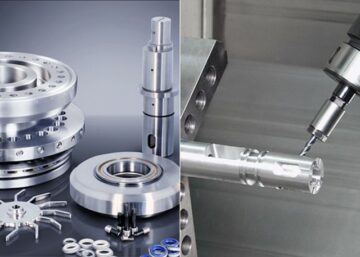The automotive industry is very competitive, and the driving force behind this is fuel economy and emission control demand. In fact, with the increasing number of vehicles on our roads, it has become more critical than ever to reduce weight to increase fuel efficiency and reduce CO2 emissions.
One way in which manufacturers are achieving this goal is by using die castings. Automotive die casting uses a metal molding process to produce parts from molten metal (die). They then cool the metal and solidify it into parts such as engine blocks or gearboxes machined into shape. This process reduces waste and saves time and costs for manufacturers and customers.
What is Die Casting?
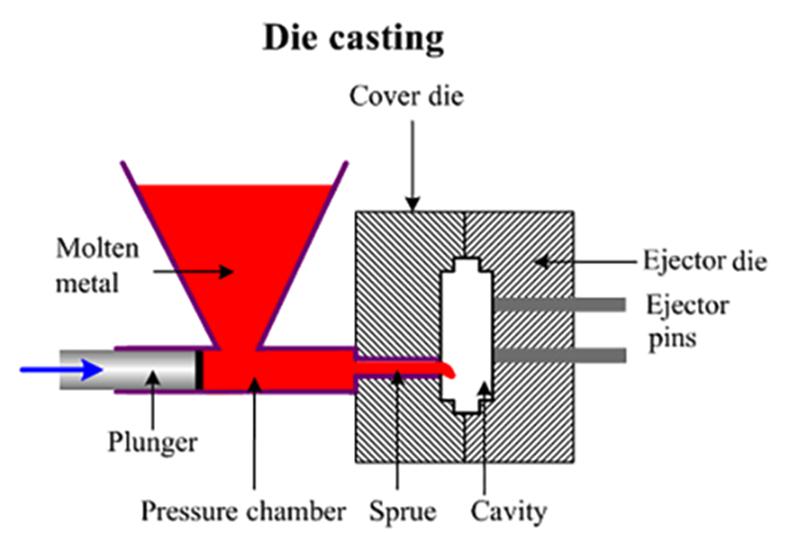 Die casting is a method of metal fabrication in which the manufacturers press a piece of molten metal into a mold designed to produce the desired shape. Die casting uses two main components: a die and a cavity. The die is made from steel, aluminum, or other alloy and has a series of holes and channels machined into it to form the object that will be cast. The molten metal flows into these cavities, thus forming the part you want to produce from your raw materials.
Die casting is a method of metal fabrication in which the manufacturers press a piece of molten metal into a mold designed to produce the desired shape. Die casting uses two main components: a die and a cavity. The die is made from steel, aluminum, or other alloy and has a series of holes and channels machined into it to form the object that will be cast. The molten metal flows into these cavities, thus forming the part you want to produce from your raw materials.
Benefits of Die Casting in the Automotive Industry
Die casting is quite suitable for the automotive industry due to its ability to produce complex parts with tight tolerances. Apart from this ability, there are various advantages of this process which include:
Manufacture of Lightweight Components
Manufacturing lightweight components are one of the most important reasons for automotive die casting. The use of die casting in manufacturing lightweight components has made it possible to reduce the weight of these components, which means that they can function in various applications such as cars and other vehicles.
The reduced weight allows manufacturers to save money on transport costs, which allows them to pass on these savings to their customers. This results in lower prices for consumers, who will also benefit from increased fuel efficiency due to using lighter vehicles.
By reducing the weight of components, auto parts casting also helps manufacturers to improve their energy efficiency levels. As a result, they will be able to generate less waste during production processes, which will help them reduce their carbon footprint and positively impact global warming issues.
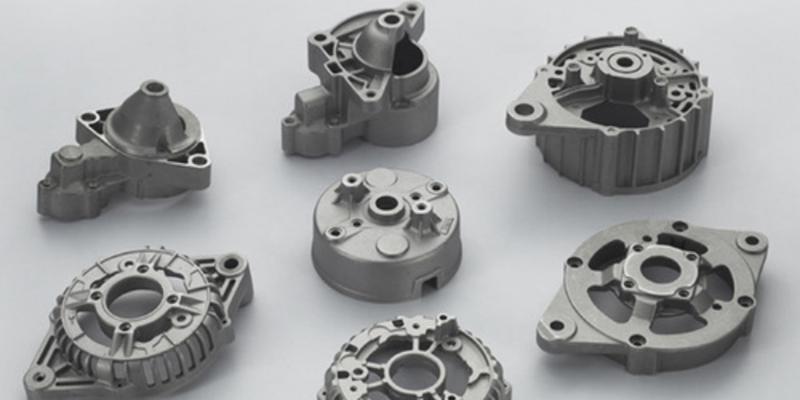 Increased Automation and Flexibility
Increased Automation and Flexibility
Manufacturers can produce die castings in large quantities, making them ideal for the mass production of vehicles. In addition to standard vehicle models, die castings are used to create components such as wheels, chassis, suspension systems, and body panels. These automotive die casting components can function in multiple vehicles or be sold as spare parts if their production runs exceed a manufacturer’s needs for its inventory.
Enhanced Productivity
Die castings are more efficient than traditional manufacturing methods because they require less labor input per unit of product produced than those processes do. For example, one die casting machine can produce four times as many wheel hubs as another machine with the same number of operators working on it at any given time. This means that a company can reduce its cost per unit of a product by using die casting instead of traditional methods to produce them.
Metals Used for Die Casting in the Automotive Industry
Automotive parts have different parts which could require different types of lightweight metals. The variety of die casting to work on various metals makes it a prime choice for machining these automotive parts. We’ve highlighted examples of the metals suitable for the process below:
1. Zinc
Zinc is the most common metal alloy used in die casting. In addition to its high strength and good corrosion resistance, zinc provides a good surface finish. Machinists use zinc to make dies that are suitable for use on many different types of molding machines.
 Advantages of Zinc Die Casting
Advantages of Zinc Die Casting
The advantages of zinc die casting are many. The most important advantages of zinc die casting are:
●Increased Flexibility: The flexibility of zinc die castings makes them suitable for the manufacture of small parts. For example, automotive castings from zinc can function as springs and other moving parts in many different types of machinery.
●High Corrosion Resistance: Zinc is an excellent all-around material for use in parts that come into contact with corrosive substances. This is because it resists corrosion better than most other metals. Its rust-proofing properties also make it ideal for use in outdoor products like lawnmowers and boats.
●Excellent Thermal Conductivity: The high thermal conductivity and strength of zinc make it ideal for use in electrical components such as heat sinks. These components need to dissipate heat quickly from electronic equipment or engines operating at high temperatures, and zinc achieves that.
●Sustainability and Eco-friendliness: Die castings are sustainable due to their low carbon emissions and energy consumption compared to other automotive manufacturing methods. It also produces less waste than extrusion molding processes, which hurts the environment. These extrusion molding processes are more dangerous due to their high energy use and level of greenhouse gas emissions.
●Dimensional Stability: Due to its corrosion resistance, zinc die castings are resistant to dimensional changes caused by moisture or heat changes. This makes them ideal for applications such as pipelines where there is the continuous application of pressure over long periods. In such applications, they do not suffer any damage due to dimensional changes occurring within the material.
2. Aluminum
Aluminum is another commonly used metal alloy for die casting. Alumina (aluminum oxide) is one of the major components of aluminum. It can serve as an additive to other metals to make them more durable or stronger. Aluminum alloys are common raw materials in the production of dies because they have excellent heat transfer properties and provide an excellent surface finish.
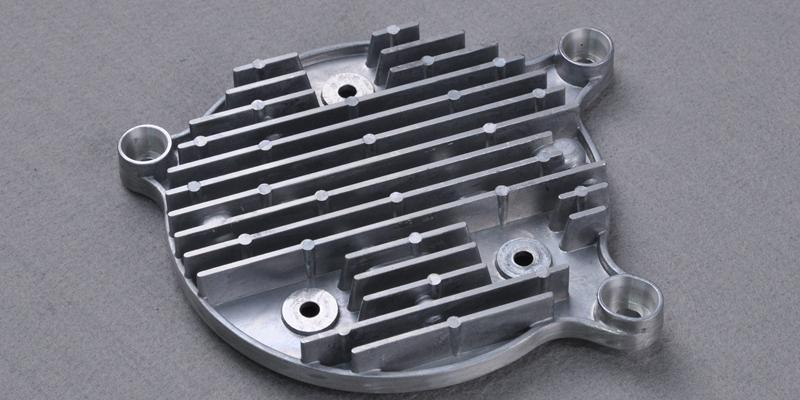 Advantages of Aluminum Die Casting
Advantages of Aluminum Die Casting
Using aluminum die casting as a machining procedure gives the following advantages:
●Manufacturing Lightweight Components: Aluminum has been used for decades as an economical alternative to other metals like steel. Aluminum is lighter than steel and has less density than most metals, so it is suitable for making lightweight parts. These parts are vital in many applications where weight is essential. For example, airbag systems and aircraft components use lightweight automotive castings from aluminum. This is because they weigh less than their counterparts made from steel or other materials.
●Increased Flexibility: Unlike other rigid metals when formed into solid shapes, aluminum has very high elasticity. It is suitable for producing intricate shapes without breaking down or cracking under pressure during processing. Aluminum also exhibits higher resistance to oxidation than most other metals. Hence, it requires less protective coatings than other metal types. This makes it ideal for applications with critical corrosion resistance, but overall weight reduction is required.
● Safety and Reliability: Aluminum die casting is a very safe process, especially compared to other manufacturing methods. This is because aluminum alloys are inherently more resistant to stress than other materials. This makes them less likely to crack or break under stress. Aluminum castings are applicable in industrial environments without worrying about the safety issues of using toxic metals.
●Environmentally Friendly: Aluminum die casting produces no waste products or emissions into the environment. This makes it a very environmentally friendly choice for businesses that must comply with strict environmental regulations such as ISO 14001 standards or US EPA guidelines.
3. Magnesium
Magnesium is another commonly used metal for die casting. It has excellent strength characteristics and is an additive to other metals to create stronger parts. Alloys containing magnesium are also often used in producing dies because they have good thermal conductivity properties. This makes them ideal for use with high-temperature tools that require rapid cooling after completing machining operations.
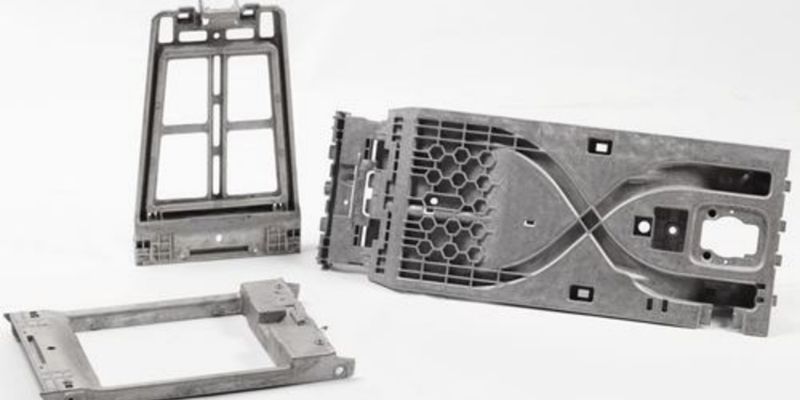 Advantages of Magnesium Die Casting
Advantages of Magnesium Die Casting
Listed below are some benefits of the magnesium die casting process:
●Manufacturing Lightweight Automobiles: Machinists use magnesium die-casting to make lightweight cars, trucks, and other vehicles that require a lightweight but robust body structure. The magnesium alloy is an excellent material because it has excellent corrosion resistance and can be easily machined and formed into various shapes and sizes.
●Increased Corrosion Resistance: The magnesium alloy is resistant to corrosion and rusting because it does not absorb moisture like steel. It does not rust, corrode or develop pitting as cast iron does, which makes it an ideal material for use in industrial applications where there are high levels of water or humidity present.
●Environmental Friendliness: Magnesium is a lightweight metal that can function in manufacturing lightweight automobiles, which have been in demand by car companies worldwide due to their ecological friendliness and low emission levels.
The Die Casting Process Explained
There are two types of die casting processes; namely, the hot and cold die casting processes. Apart from the apparent temperature difference, these two processes also differ in their setup and operating pressure. We’ve explained each process in detail below:
Hot Die Casting
Hot die casting is another name for the hot chamber die casting method. The furnaces integrated inside the gooseneck machines used in this technique heat the metal till it melts. A hydraulically powered piston uses the nozzle and gooseneck to push the molten metal from the furnace into the die chamber. The molten metal is then kept in the die cavity under pressure until it solidifies.
There is an intrinsic melting point to this kind of die casting. As a result, it works better with metals with lower melting points. Aluminum is inappropriate for this process because of its high melting point of 1,220 degrees Fahrenheit. On the other hand, zinc and magnesium are suitable for this process because of their comparatively low melting points.
Cold Die Casting
The machinist pours the molten metal into the injection cylinder’s shot sleeve during this procedure. After pouring, a hydraulic plunger pushes molten metal into the mold cavity without heating the sleeve. This technique uses pressure ranging from 30 MPa to 150 MPa. The method is known as “cold chamber die casting” since heat is not used. Aluminum alloys with high melting points work well using this method.
Automotive die casting components produced by cold chamber die casting have outstanding dimensional accuracy. Because the increased pressure, it also results in denser metal castings and automobile parts with greater strength. The procedure is simple to complete and costs less to maintain.
Why the Die Casting Process is a Fast Rising Trend in the Automotive Industry?
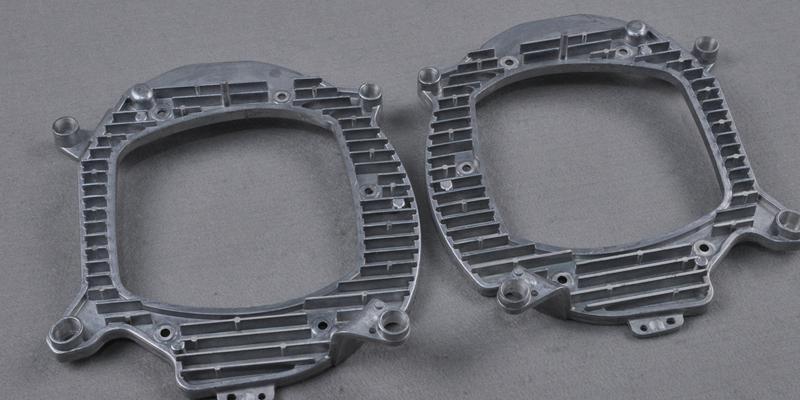 The die-casting automotive industry was valued at over 61 billion dollars in 2021. By 2027, the process will be worth an additional 20 billion dollars. This mammoth amount of money stemming from this procedure begs the question, “why is this process generating so much money?” There are a few reasons for this rising popularity.
The die-casting automotive industry was valued at over 61 billion dollars in 2021. By 2027, the process will be worth an additional 20 billion dollars. This mammoth amount of money stemming from this procedure begs the question, “why is this process generating so much money?” There are a few reasons for this rising popularity.
First, the new trend in automotive manufacturing is to make cars as lightweight as possible. With the die-cast process, this is possible as die-cast parts have thinner walls, are more robust, and are lightweight.
Also, the reduced need for labor makes it a more economical workflow. This means manufacturers can produce cars at lower prices without reducing the quality.
These factors make the die casting process an attractive one for many manufacturers to work with.
WayKen’s Die Casting and Automotive Parts Manufacturing Services
At WayKen, we specialize in manufacturing metal casts that perfectly suit the needs of your applications. Our team of expert technicians is highly skilled and experienced in die casting technologies, so you can be confident that we will provide you with the best die casting services available.
We are also experts at both the automotive prototyping and manufacture of automotive parts. Whatever level of prototyping your product is at, we can support to get it to the end. Upload your CAD file and get an instant quote today!
Conclusion
It’s easy to see why manufacturers are turning more and more to die casting. This process is widely used due to its effectiveness and appeal to automotive manufacturers. Automotive die casting is one of the most promising trends in the industry today, and it has largely contributed to reducing vehicle manufacturing costs and improving both quality and reliability.



